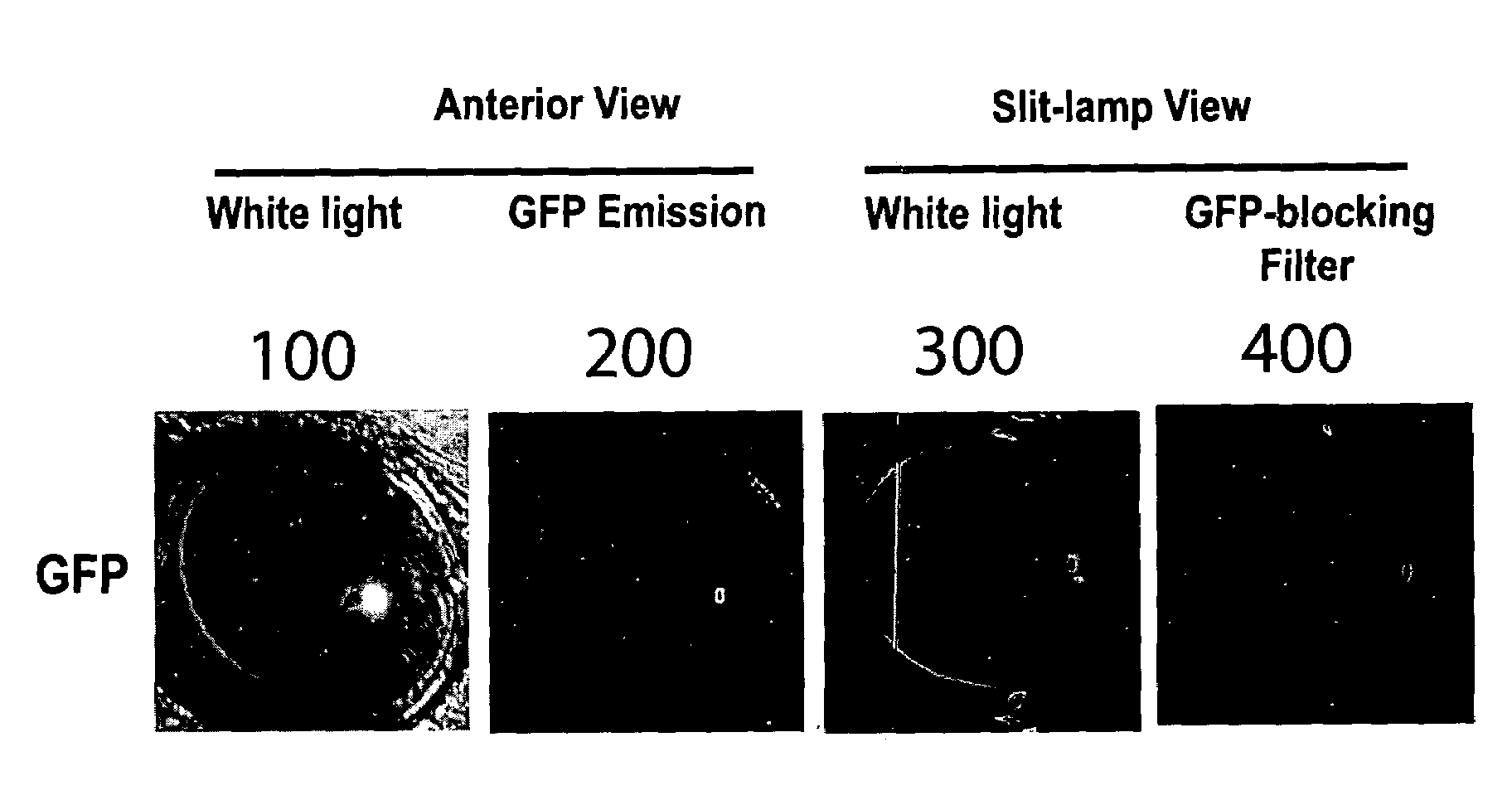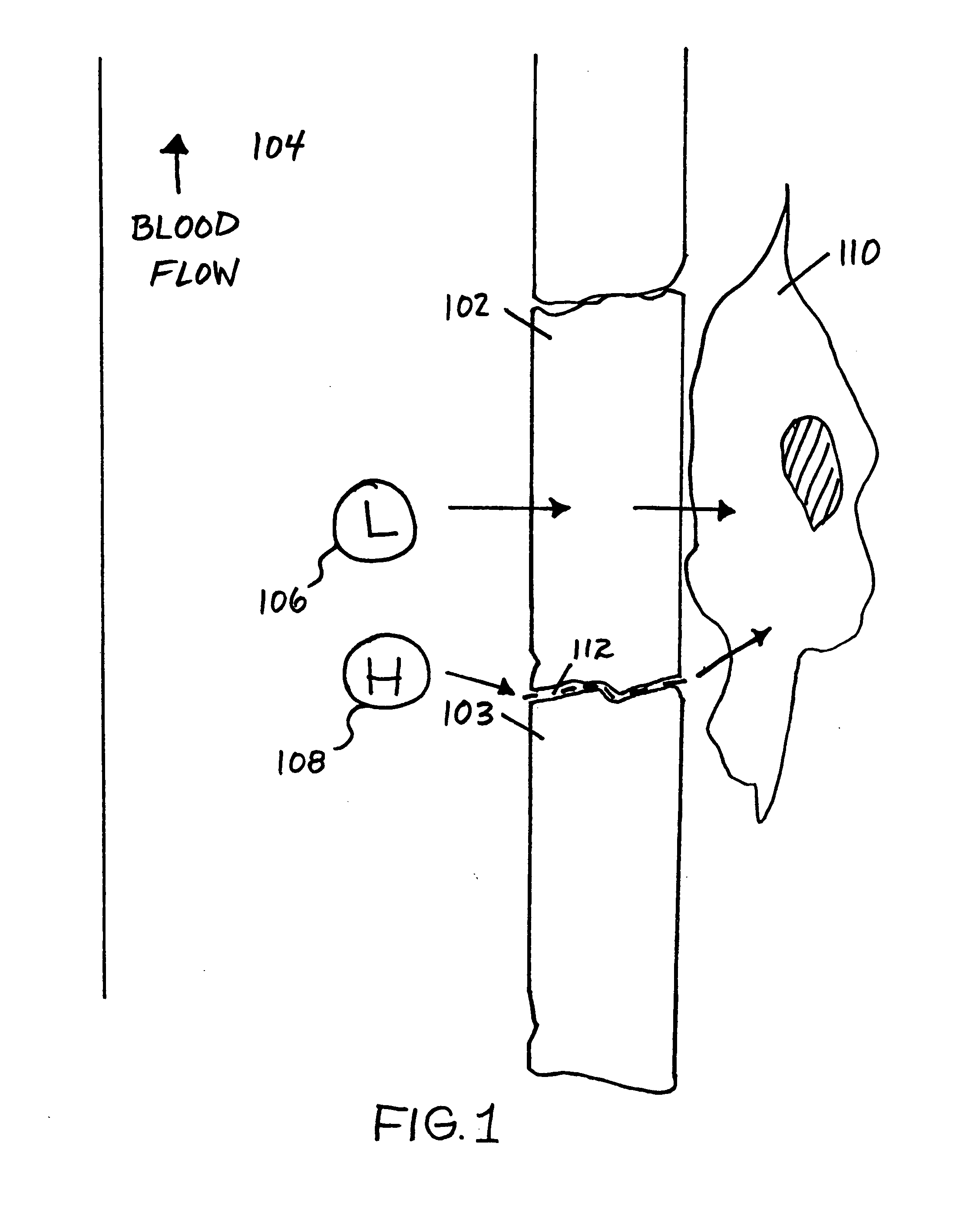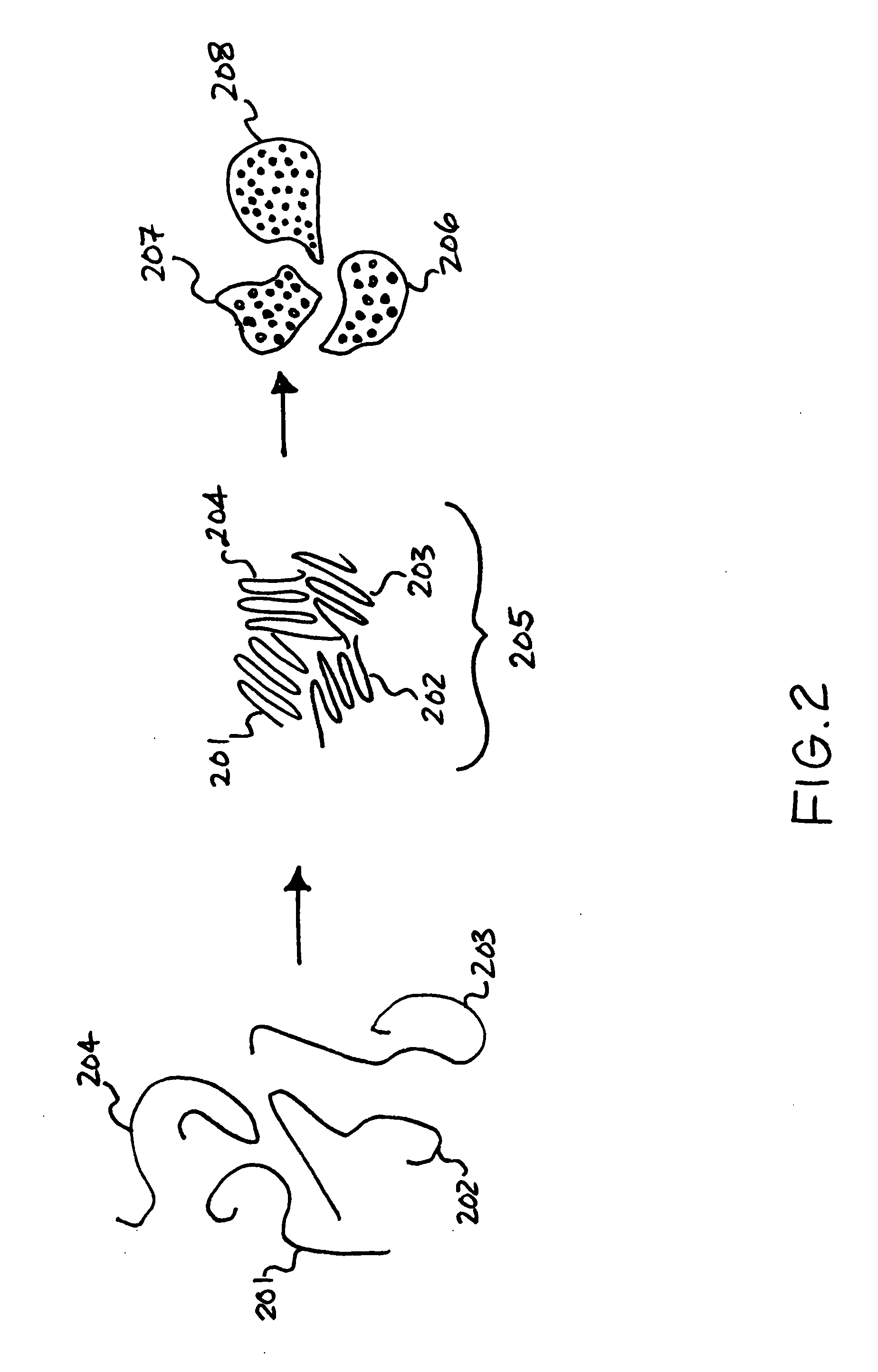Non-invasive methods and related compositions for identifying compounds that modify in vivo aggregations of disease-related polypeptides
- Summary
- Abstract
- Description
- Claims
- Application Information
AI Technical Summary
Benefits of technology
Problems solved by technology
Method used
Image
Examples
example 1
Construction of Transgenic Mice Expressing Huntingtin-Exon-1 Variants within the Ocular Lens
[0120]Transgenic mice that can express mutant huntingtin fragments in the ocular lens can be employed for screening compounds to identify active compounds for the prevention, management, and / or treatment of Huntington's disease and related diseases. FIG. 8 is a schematic of an exemplary expression cassette for expressing a gene of interest within the ocular lens of an animal host. In FIG. 8, various forms of EGFP-tagged, huntingtin-exon-1 fragments containing variable lengths of poly-Q-repeat domains can be produced from an expression construct 800 that includes a crystallin promoter 802 positioned upstream and operably-linked to a huntingtin fragment containing an expanded-CAG repeat, such as “Htt Exon1+Qn”804, which is positioned upstream and operably-linked to an EGFP-encoding sequence 808. Optionally, a 3′ untranslated sequence, such as a “SV40-polyA” sequence 810 or an equivalent sequenc...
example 2
Characterization of the Expression of EGFP-Huntingtin-Exon-1 Fragments within the Ocular Lens of Animal Hosts by Slit-Lamp Biomicroscopy
[0124]The transgenic animals described in Example 1 are evaluated to quantify poly-Q-mediated-aggregation within the ocular lens of an animal host. In three of the four founder lines, robust lens-specific, or lenticular, expression is observed by employing a slit-lamp biomicroscope that permits the viewing of an optical section of the lens and the digital imaging of GFP fluorescence that arise from the lens of each animal host. FIG. 10 is a digital image of the lens of transgenic founder mice expressing huntingtin-exon-1 variants that contain extended poly-glutamine (Q) domains. FIG. 10A is a digital image of an anterior view of a hypothetical animal host illuminated with white light. FIG. 10B is a digital image of an anterior view of a hypothetical animal host that records the filtered light emitted by GFP-tagged proteins within the ocular lens, un...
example 3
Microscopic Analysis of Inclusion Bodies Containing Mutant Huntingtin Fragments
[0126]FIG. 11A is a microscopic view of lens that expresses a mutant huntingtin fragment containing a non-extended poly-Q domain “25Q,” removed from a transgenic mouse at 8 weeks of age at 10× magnification. In FIGS. 11A-11C, and 11F, GFP florescence appears in green, and the nuclei stained with propidium iodide stains in red. FIG. 11B illustrates an exemplary lens section removed from a transgenic mouse that shows a thin halo (green) of inclusion bodies at 3 weeks. FIG. 11C illustrates an exemplary lens section removed from a transgenic mouse expressing a mutant huntingtin “72Q” fragment at 8 weeks that shows a ten-fold increase in the number of inclusion bodies within the halo region (green) during this time period. FIG. 11D illustrates an exemplary lens section of lens removed from a transgenic mouse expressing a mutant huntingtin “72Q” fragment examined for GFP fluorescence at 20× magnification. In FI...
PUM
| Property | Measurement | Unit |
|---|---|---|
| Fraction | aaaaa | aaaaa |
| Fluorescence | aaaaa | aaaaa |
| Bioavailability | aaaaa | aaaaa |
Abstract
Description
Claims
Application Information
 Login to View More
Login to View More - R&D
- Intellectual Property
- Life Sciences
- Materials
- Tech Scout
- Unparalleled Data Quality
- Higher Quality Content
- 60% Fewer Hallucinations
Browse by: Latest US Patents, China's latest patents, Technical Efficacy Thesaurus, Application Domain, Technology Topic, Popular Technical Reports.
© 2025 PatSnap. All rights reserved.Legal|Privacy policy|Modern Slavery Act Transparency Statement|Sitemap|About US| Contact US: help@patsnap.com



